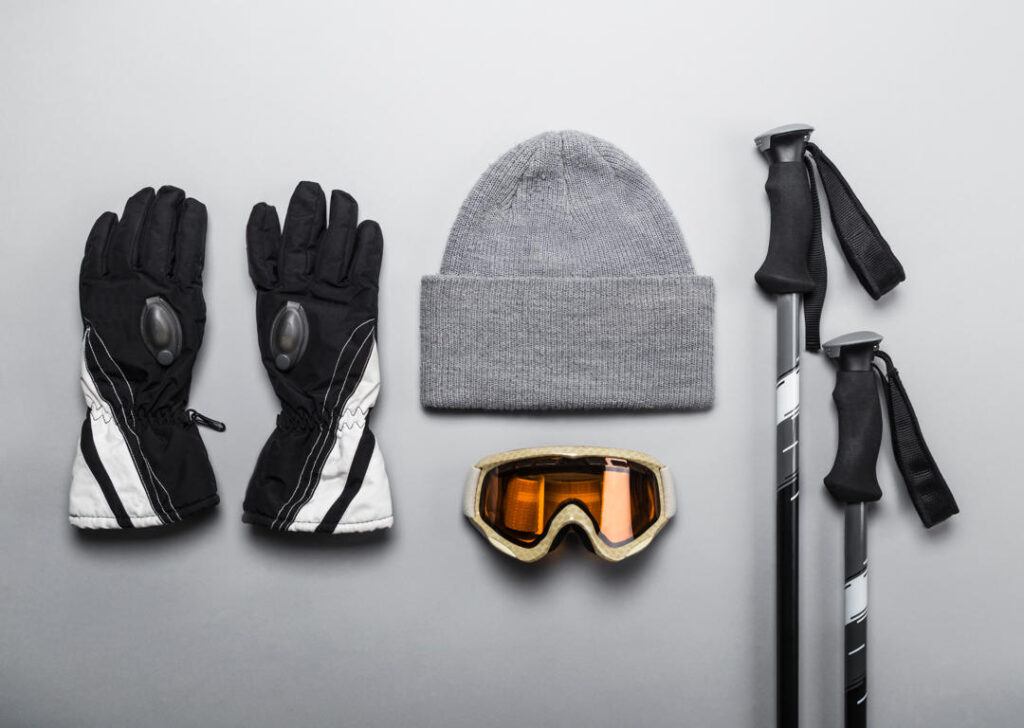
Ski gear represents a significant investment, and proper maintenance is essential for ensuring its longevity and optimal performance. Whether you’re a seasoned skier or a beginner hitting the slopes in Vail, Colorado, understanding how to care for your equipment can make a big difference in your skiing experience. Well-maintained gear not only enhances safety and comfort but also ensures that you get the best performance out of your equipment season after season. This guide provides expert tips on how to properly maintain your ski gear.
Regular Ski and Snowboard Tuning
Why Tuning is Important
Tuning your skis or snowboard is crucial for maintaining control, improving glide, and ensuring safety on the slopes. Over time, the edges of your skis or snowboard can become dull, and the base can develop scratches or uneven wear. Regular tuning addresses these issues, keeping your gear in top condition.
Steps for Tuning
Edge Sharpening: The edges of your skis or snowboard should be sharp enough to provide grip on icy or hard-packed snow. Use a diamond stone or edge tool to sharpen the edges, following the manufacturer’s recommended angles. Be sure to remove any burrs or rough spots that could affect your control.
Base Repair and Waxing: The base of your skis or snowboard should be smooth and free of deep scratches. If you notice any gouges, you can repair them with a P-Tex candle. After repairing the base, apply a fresh coat of wax to improve glide and protect the base from drying out. Waxing should be done regularly, especially if you ski frequently or in varied snow conditions.
Binding Check: Always have certified ski techs check your bindings. They will ensure that your bindings are properly adjusted and functioning correctly. They will check the screws and other components for tightness, and test the release mechanism to ensure it’s functioning properly.
Boot Maintenance and Care
Ensuring a Perfect Fit
Ski boots are one of the most critical pieces of gear, and maintaining their fit and comfort is essential for performance. Over time, ski boots can lose their shape, and liners can become compacted, affecting the fit.
Remove the liners from your boots every so often to allow them to dry completely. This prevents moisture buildup, which can lead to mold and odor. If the liners have become compacted, consider replacing them or having them professionally refitted. Inspect the outer shell of your boots for cracks or excessive wear, especially around the buckles and soles. Make sure the buckles are functioning correctly and that the shells are free of debris. If you notice any damage, it may be time to replace your boots.
Storage Tips
Proper storage of your ski boots during the off-season is also important. Store them in a cool, dry place, away from direct sunlight, which can cause the plastic to degrade. To maintain the shape of your boots, consider using boot trees or stuffing the liners with newspaper.
Caring for Your Ski Poles
Checking for Damage
Ski poles are often overlooked when it comes to maintenance, but they play an important role in your skiing technique. Over time, poles can become bent, or the baskets can wear down or break. Inspect the shaft of your ski poles for any bends or cracks, and replace damaged poles as needed. If the poles are adjustable, ensure that the locking mechanisms are secure and functioning properly.
Check the baskets for wear and tear, especially if you often ski in deep snow. Replacing worn-out baskets is a simple task that can improve your performance. Also, ensure that the grips are secure and comfortable, as loose grips can lead to fatigue.
Helmet and Goggles Maintenance
Helmet Care
Your helmet is a vital piece of safety equipment, and it’s important to keep it in good condition. Regularly inspect your helmet for any signs of damage, such as cracks, dents, or worn padding. Even a minor impact can compromise the integrity of the helmet, so if you’ve had a significant fall, replace it.
Clean the outer shell of the helmet with mild soap and water, and avoid using harsh chemicals that could damage the materials. The interior padding can often be removed and washed according to the manufacturer’s instructions. Store your helmet in a cool, dry place, away from direct sunlight and extreme temperatures. Avoid placing heavy objects on top of the helmet, as this can warp the shape and reduce its effectiveness.
Goggle Care
Goggles are essential for protecting your eyes from the sun, wind, and snow, but they require careful handling to maintain their clarity and effectiveness. Avoid touching the inside of the goggle lens, as this can damage the anti-fog coating. If the lens gets dirty, use a soft microfiber cloth to clean it, avoiding abrasive materials that can scratch the lens. To prevent fogging, allow your goggles to dry completely after each use, and store them in a soft bag to protect the lens from scratches.
Storing Your Gear Properly
Off-Season Storage
Proper storage of your ski gear during the off-season is key to maintaining its condition for the next year. Store your skis or snowboard in a cool, dry place, away from direct sunlight and moisture. Consider using ski ties to keep the skis together and prevent the edges from rubbing against each other. It’s also a good idea to apply a storage wax to the base to protect it during the off-season; this wax can be scraped off before your first day back on the slopes.
As mentioned earlier, ensure your boots are thoroughly dried before storage and kept in a cool, dry place. Avoid storing them in attics, garages, or basements, where temperature fluctuations can cause damage. Keep your poles, helmet, and goggles in a designated gear bag to protect them from dust and damage. Store the bag in a stable, climate-controlled environment where the gear won’t be crushed or exposed to extreme conditions.
Professional Maintenance Services
While it’s important to know how to maintain your ski gear at home, there are some tasks that are best left to professionals. Even with regular maintenance, it’s a good idea to take your skis or snowboard to a professional shop for an annual tune-up. This service typically includes base grinding, edge sharpening, waxing, and a thorough inspection of the equipment, ensuring that your gear is in optimal condition and ready for the season.
If you’re experiencing discomfort or performance issues with your ski boots, consider visiting a professional boot fitter. They can make adjustments to the liners, footbeds, and shells to improve the fit and comfort of your boots. Additionally, binding settings can change over time due to wear and tear. A professional shop can calibrate your bindings to ensure they release properly, which is crucial for your safety on the slopes.
Maintaining your ski gear is essential for both performance and safety. By following these expert tips, you can extend the life of your equipment and ensure that you’re always ready for your next adventure on the slopes. Whether you’re a local in Vail or visiting for the season, keeping your gear in top shape will enhance your skiing experience and keep you safe on the mountain. If you need any assistance with tuning, repairs, or boot fitting, visit American Ski Exchange in Vail. Our team of experts is here to help you get the most out of your gear and make sure you’re fully prepared for the slopes.
